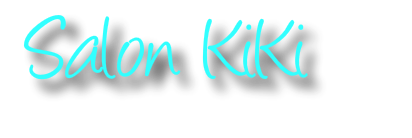HEALTHY HAIR CARE TIPS:
Signs That Your Hair Needs A Protein Treatment
1. No Bounce back: In simple terms your hair has lost its elasticity. To test this, when wet, stretch a few strands of your hair. If your hair doesn’t revert back to its original shape/length and just kind of limply hangs there, then you are in need of a protein treatment. Also, if you stretch your hair and it stretches and breaks off, that is also a sign that your hair is in serious need of a protein treatment.
2. Limp/Mushy: If your wet hair feels limp, mushy or gummy, then you need to add protein to your regimen to help balance out the excess moisture vs. the lack of sufficient protein in your hair.
3. You’ve recently colored your hair: If you’ve recently colored your hair there is probably a good chance you need to do a protein treatment. Why? Hair dyes and bleach lift the cuticle in order to change the color of your hair. This process strips hair of its natural proteins and can be severely damaging. This is why your hair can feel dry and brittle after a coloring session. Once the structure of your hair has been compromised, doing a few protein and moisture treatments can fill in the gaps/holes created in the cuticle by the bleach and/or color. This will promote the healthy, strength and restoration of your hair.
4. Increased breakage/shedding: If you are noticing an increased amount of shedding or breakage (on your combs/brushes/clothes…etc) your hair is sending out a sign that it’s protein levels are low. Doing a protein treatment will help decrease the amount of shedding and breakage. If you notice these signs do not decrease it may be time for a cut to alleviate some split ends/ and irreversible damage.
Best Practices:
Heat: Prior to applying any direct heat to your hair, and provided that your hair is not in a protein-overload state, it is an excellent idea to do a protein treatment to strengthen the cuticle against heat damage. You must also always use a good heat protectant. This having been said, even with the best of practices and heat protectants mistakes can occur. Protein treatments and heat protectants are useless against improper direct-heat practices. Always proceed with caution when adding direct heat to your hair. Never skip steps or cut corners to save time. The health of your hair should be your main concern.
Protein treatments and protein rich conditioners (which usually have keratin or some other form of protein as the main ingredient) may be purchased at your local beauty supply store. You may also go the natural route and DIY by adding protein supplements into your hair regimen during your pre-poo, co wash or deep conditioning steps. Simply add eggs, mayo, or yogurt. They are all great sources of protein that are inexpensive.
1. No Bounce back: In simple terms your hair has lost its elasticity. To test this, when wet, stretch a few strands of your hair. If your hair doesn’t revert back to its original shape/length and just kind of limply hangs there, then you are in need of a protein treatment. Also, if you stretch your hair and it stretches and breaks off, that is also a sign that your hair is in serious need of a protein treatment.
2. Limp/Mushy: If your wet hair feels limp, mushy or gummy, then you need to add protein to your regimen to help balance out the excess moisture vs. the lack of sufficient protein in your hair.
3. You’ve recently colored your hair: If you’ve recently colored your hair there is probably a good chance you need to do a protein treatment. Why? Hair dyes and bleach lift the cuticle in order to change the color of your hair. This process strips hair of its natural proteins and can be severely damaging. This is why your hair can feel dry and brittle after a coloring session. Once the structure of your hair has been compromised, doing a few protein and moisture treatments can fill in the gaps/holes created in the cuticle by the bleach and/or color. This will promote the healthy, strength and restoration of your hair.
4. Increased breakage/shedding: If you are noticing an increased amount of shedding or breakage (on your combs/brushes/clothes…etc) your hair is sending out a sign that it’s protein levels are low. Doing a protein treatment will help decrease the amount of shedding and breakage. If you notice these signs do not decrease it may be time for a cut to alleviate some split ends/ and irreversible damage.
Best Practices:
Heat: Prior to applying any direct heat to your hair, and provided that your hair is not in a protein-overload state, it is an excellent idea to do a protein treatment to strengthen the cuticle against heat damage. You must also always use a good heat protectant. This having been said, even with the best of practices and heat protectants mistakes can occur. Protein treatments and heat protectants are useless against improper direct-heat practices. Always proceed with caution when adding direct heat to your hair. Never skip steps or cut corners to save time. The health of your hair should be your main concern.
Protein treatments and protein rich conditioners (which usually have keratin or some other form of protein as the main ingredient) may be purchased at your local beauty supply store. You may also go the natural route and DIY by adding protein supplements into your hair regimen during your pre-poo, co wash or deep conditioning steps. Simply add eggs, mayo, or yogurt. They are all great sources of protein that are inexpensive.

